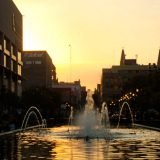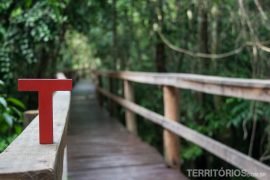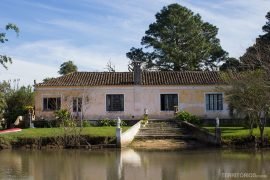Every child born within Brazil is raised understanding the following truth: the Amazon is the planets largest forest, and also the “lungs of the earth.” This magnificent ecosystem inhabits 40% of our country and influences temperature worldwide.

In today’s information age, the Amazons impact on our delicate ecosystem is globally understood. Yet there are few who really show an interest to understand such a spectacular location minus the lavish expectations of 21st century five star tourism: high-end restaurants, lush resorts, luxurious transportation and readily available posh shopping. Yet, the Amazon does not offer any of this, and this is precisely why the sustainable tourism AOKA offers throughout her gorgeous landscape is so mind-blowing and impactful.

I decided to visit the world’s most sacred grounds at her very best: just the way she is. It was 8 magical days aboard a steamboat, sleeping in hammocks located either upon our boat or underneath the forests canopy, and feasting on fish from the Rio Negro and fruit and legumes from the nearby villages. We sailed roughly 400 km from our departure city of Manaus, to a vast and breathtakingly isolated point of the Anavilhanas archipelago.

As we left the port of Manaus, our first impression was that of being in a distant land, possibly a coastal city of India. The scene is dramatic, a village of traditional cottages and huts all supported by stilts, and inhabited by those who have traded life on land for that of the river. Manaus is a predominantly fluvial city, house boats, floating gas stations and government buildings, and sunbathing locals all daily intermesh with arriving international cargo ships.

We had the privilege to be guided by Samuel, a native Brazilian from the Baré tribe, who was disowned by his people as his family moved to Europe. Samuel speaks 3 languages, in addition to inheriting all of the forests wisdom from his parents and grandparents.


Our first Amazonian day started with the famous meeting of the waters, a point where the Rio Negro and Rio Solimões meet, but stay true to their waters and do not mix. This renowned natural phenomenon was the ideal way to start our trip. The days ahead brought us to the tip of Anavilhanas, the world’s largest floating Archipelago. This area has roughly 400 islands and takes a 6 hour canoe ride just to reach the half way point of her waters.

Here, our nights where filled with canoe excursions throughout the boarders of the archipelago. We had the privilege to go on nighttime river beach journeys and viewing sessions where frequent encounters with the regions wildlife became the norm. Red eye crocodiles, pink dolphins, sting rays, and coral snakes were all seen throughout these expeditions!

We also had the wonderful opportunity to connect with riverside communities, as we were taken in as guests and began to understand the realities of their worlds.


served on banana leaf
From the eyes of one who lives within the “real world” these communities may seem poor and poverty stricken, yet they are rich and wealthy in sustainable living, as they take only what is needed from the Amazon Forest, and are extremely careful to respect and protect her delicate ecosystem. We slept that night right underneath the Amazons canopy, and ate a dinner complete with fresh tambaqui served on banana leaves. Our guide Samuel served a dinner that would make the finest gourmet chefs jealous.
8 Amazonian days, 8 eye-opening days to reinforce the fact that we are a species of this planet and to have one on one contact with nature at her most basic and beautiful level is the most astounding luxury one can experience.

Take Note
I chose to take this trip with a company who was born and lives for creating truly sustainable tourism (which makes all the difference within a trip itinerary). This is how and why I was able to visit the Amazon the way she really is, through the experience of living with native Amazonians and beginning to understand how their day to day lives really are. This journey was exclusively created for the participants of the TEDx Amazon. After attending the conference we departed soon after.

To anyone who wishes to truthfully begin to understand the Amazon, then please travel with AOKA, I definitely recommend them. They are extremely well organized and are very strict on working with small groups, thus lessening the impact on nature and giving the sensation that the itinerary was built just for you.
Manioc flour with snake, a typical dishV
Finally for those with a weak stomach, take care of Manaus’ traditional restaurants. I was enjoying some toasted manioc flour mixed with a traditional meat when I noticed an interesting flavor. I asked “what kind of meat is this?” and received and answer of: “You don’t recognize it? It´s Snake meet.” I thus began to separate the meat from the rest of my food…

Carla Werkhaizer is a designer in Belo Horizonte and believes that nature and science are the basis to creating solutions to better the lives of people.
© All rights reserved. Pictures and report 100% originals.
Translated by Lúcia Maciel
English teacher








